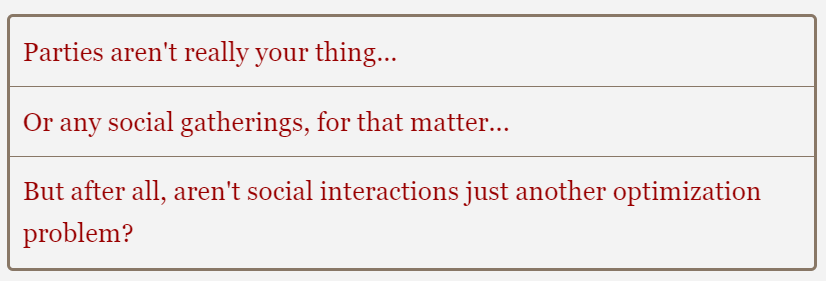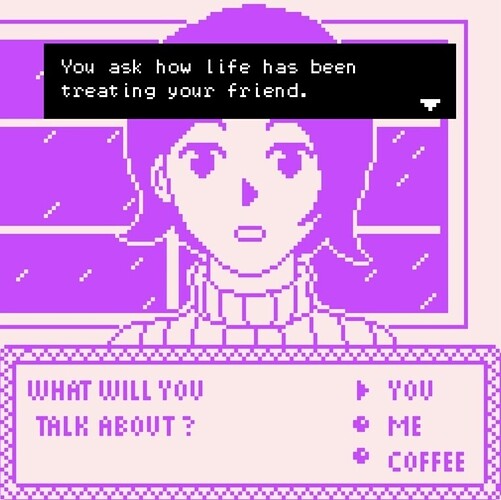A feeling of player agency is an elusive thing. It is hard, if not impossible, to quantify. I suppose the reason that agentic reading as an experience is so slippery is that the subjective impression of agency is not necessarily the same as the coded-in presence of agency. If I, as a player, feel that I am making important choices in a game, then it really doesn’t matter whether those choices are impactful–in terms of outcomes–or not. Games are experiences, not differently filled beakers on a chemist’s counter.
I have not been reviewing games in which I do not experience a feeling of agency. This is not because such works have no artistic merit, but because as a critic I am interested in agentic reading. I also have a massive backlog of traditional fiction–I will not get through it in my lifetime–that makes incessant demands on my time for less agentic experiences. This is to say nothing of all the poetry out there! It’s got nothing to do with quality, but my dance card is completely and hopelessly full already.
New Year’s Eve, 2019
Autumn Chen
When the protagonist, a few clicks into New Year’s Eve, 2019, is offered the following choice:
and, having selected “optimization problem,” receives the following feedback:
I had a feeling that it might be a kind of choice-based Suspended with constraints dictated by social rather than epistemological forces. The prospect of simulation is underscored by a “Status” screen that indicates not only physical status but relationship statuses (ranked quantitatively on a scale from 0-5). I loved the meta effects of the Status screen. Whatever the realities might be, they strongly reinforced the idea of a problem that one might be able to solve.
This “puzzle,” as it is presented, is navigating the difficult waters of family, culture, friendships, and romantic (im)possibilities at a New Year’s party as Qiuyi Zhao (“Karen Zhao” in English), a college senior home for the Christmas holiday.
However: having gotten both possible endings, there is a bleak irony to the promise of the Status screen. The reality is that the protagonist is catastrophically limited by symptoms of mental illness (is it untreated? I missed the answer if there is one) exacerbated by feelings of isolation and otherness within the social structure of family and past relations. I think people with a history of anxiety or social discomfort will identify–perhaps to a painful extent–with Karen.
The gameplay loop is simple: engage with people (or don’t) at the party, endure the stress-inducing dinner, and wind up in one of two states.
I won’t say more about the plot. I will say that New Year’s Eve, 2019 is a game in which the experience of agency is crucial to the experience of the story. It is one thing to watch someone fail again and again, and it is another thing to feel responsible their failures. I thought: “if this is an optimization problem, perhaps I should have talked to someone else. Perhaps I should have remained silent. Perhaps…”
The game makes good use of its interactive structure: I felt, simultaneously, that my choices did and didn’t matter. I wanted to do something nice for this character, but I didn’t know what to do.
A Paradox Between Worlds did something interesting with choice, too–nearly all decisions were like/reply/reblog decisions in a Tumblr-like platform. I think judicious use of systems and choice is just something the author does well.
I do recommend this game, though people currently struggling with mental health issues might find that it cuts a bit too close. Having reached a comfortable distance between my present and past challenges, I found it identifiable in a way that I liked.



